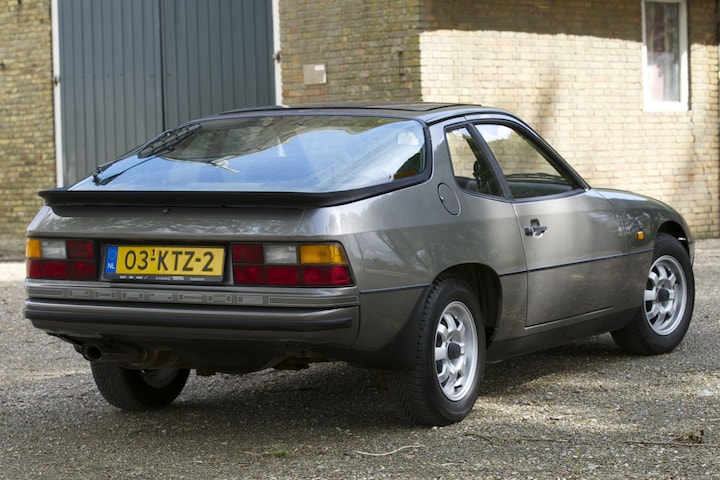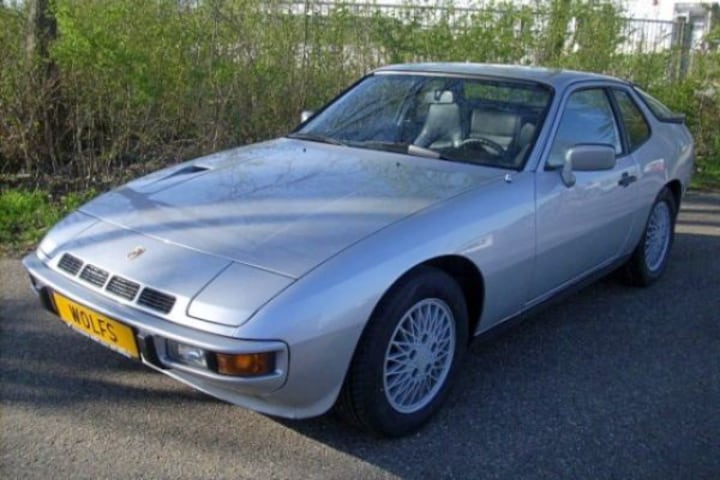Prized classic


Rear-wheel drive and an air-cooled boxer engine were once synonymous with Porsche. This changed in the 1970s with the 924 with its liquid-cooled, front-mounted in-line four-cylinder. A revolution for Porsche. Almost fifty years after its birth, the 924 is conquering a place in the classic world, with early copies or special versions being the most popular.
A car that should actually have been a Volkswagen, with an engine and gearbox from Audi, can you call that a real Porsche? You can only answer yes to that question. Unless you define a real Porsche within very narrow parameters, with an air-cooled six-burner boxer as the most important criterion, then it will be a different story. In that case, the calendar stops after the 911 of generation 993. Another point of criticism of the 924 is the engine power of only 125 hp. That is still 35 hp more than the 912 (a ‘911’ with a 1,600 cc four-cylinder boxer). In 1975, the introduction year of the 924, there was no reason to be ashamed of that amount of horsepower. At that time, a BMW 520 had no more than 115 hp and the V8 of a Mercedes-Benz 350 SL Roadster produced 200 hp. Seen from that light, the Porsche 924, weighing just over a thousand kilos, is not so bad. Perhaps the brand name is also its biggest handicap, because expectations of a Porsche are so high. If the 924 had gone through life as a Volkswagen, critics might have seen it as a fun, sporty car.

Under big brother 928
Naturally, the development of the 924 ran almost parallel to that of its bigger brother, the 928. Technically, there are some similarities, such as the front-mounted liquid-cooled engine and the rear-mounted gearbox (transaxle) to achieve optimal weight distribution. Because let’s face it: the 911, with its engine placed behind the rear axle, is far from ideal. The Dutchman Harm Lagaaij was among those at the drawing board. Why did this car not become a Volkswagen? In Wolfsburg they ultimately saw no point in it and for Porsche there was no way back. Moreover, an affordable ‘volume model’ was needed to keep Porsche’s financial base healthy. The chimney of the 911 alone could no longer smoke in Stuttgart-Zuffenhausen and that is no different in 2014. In short, the 924 was a welcome addition to the range and enjoyed an eager buying public.

The Porsche 924 has the gearbox at the rear axle.
Cracks in dashboard
It’s 2024 and we’re behind the wheel of a forty-year-old 924: nice and close to the asphalt, quite a few clocks in our sights and of course the almost inevitable cracks in the dashboard. Some refurbishment work has been done to this car over the years, but it is still largely original. They are becoming increasingly difficult to find in that condition. The two-liter engine produces a nice, dark growl and offers sufficient torque over a wide rev range. Sure, EVs have no trouble keeping up with or speeding past this Porsche, but that doesn’t make it any less fun. The seats – the same as in a 911 – are good, although the seating position will not be ideal for everyone. The pedals are far away and the steering wheel could be a little further in. The light-footed character of the 924 is striking. Its good handling is partly due to its good weight distribution. Moreover, it is not that heavy. The five-speed gearbox is easy to operate, despite the long linkage to the rear-mounted transmission. It shifts nicely ‘heavy’ and thanks to the long final drive, this Porsche is also suitable for driving at a punishing pace on the German highway.

The first dashboard of the Porsche 924. Later a new cockpit with a more modern design was added.
Increased in price compared to ten years ago
A quick look at used car portals shows that nowadays you can have a 924 in your driveway for amounts between 4,500 and 15,000 euros. That was only 1,000 euros ten years ago, but this is still and remains the cheapest way to drive a Porsche, closely followed by the 944. Don’t expect a car in good condition for those few cents, even if it is there might still be a valid MOT on it. Ten years ago it was often a 924 with quite a backlog in maintenance, the necessary defects and probably rust damage. If you want such a car to be in good condition again, you can quickly spend several thousand euros. And for that total sum you can get a reasonably neat 924. It can also be more expensive, because prices already exceed ten grand for a Turbo and you can take out a mortgage for the rare Carrera GTS Club Sport, if you find one. The Carrera GT is a lot cheaper, count on 40,000 euros. Or you choose the 924 S (from 1985), which does without a Volkswagen/Audi power source and has the 150 hp engine of the 944 from Porsche’s own kitchen. This is actually the finest 924, partly due to the many improvements that have been made over the years. A strong increase in value is not expected, but a good 924 will certainly not decrease in value anymore.

Pay attention to this when you view a Porsche 924
- Rust: on windshield, sills, bottom of doors
- Cracks in dashboard
- Headlight mechanism defective
- Broken upholstery
- Expansion tank coolant leaking
- Camshaft worn
- Brake hoses porous
- Rust on brake and fuel lines
- Injection system defects (K-Jetronic from Bosch)
- Cracks in rubber hoses in engine compartment
- Leak in exhaust manifold
- Worn differential
Highlights 924
1975 Market launch, production start (November) in Neckarsulm
1977 Three-speed automatic available
1978 Five-speed gearbox at extra cost
1979 Introduction 924 Turbo
1980 Changes to the interior, chassis, galvanized body
1985 The 924 S replaces the 924
1988 Production 924 stops
engines
2.0 92 kW/125 hp 1976-1985
2.5 110 kW/150 hp 1985 (924 S)
2.5 115 kW/160 hp from model year 1987 (924 S)
2.0 125 kW/170 hp 1979 (Turbo)
2.0 130 kW/177 hp Turbo, from model year 1981
2.0 154 kW/210 hp Carrera GT

Porsche 924 Turbo

Porsche 924 Carrera GT
Nice to know that…
…the 924 as project EA425 was born to become a Volkswagen.
…the front McPherson struts come from the Volkswagen 1302
…part of the front suspension comes from the Golf
…the rear suspension is also based on that of a Volkswagen 1302
…the 2.0-liter engine can also be found in the Volkswagen LT commercial vehicle
…the seats come from the 911
…a Porsche 924 in 1976 was three times as expensive as a Volkswagen Golf
…the first examples were built in 1975
…the 924 cost 37,900 guilders (€17,198) in its introductory year (1976)
…a Porsche 911 in 1976 was 16,000 guilders more expensive than a 924
…the engine of the 924 S is half a V8 from the 928
…the 968 is the latest variation on this theme (with 3.0 four-cylinder)
– Thanks for information from Autoweek.nl




